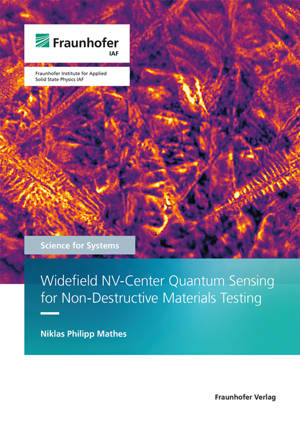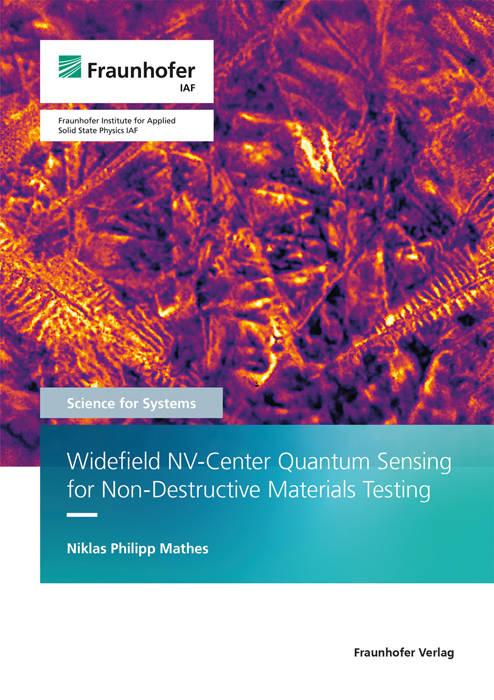
- Afhalen na 1 uur in een winkel met voorraad
- Gratis thuislevering in België vanaf € 30
- Ruim aanbod met 7 miljoen producten
- Afhalen na 1 uur in een winkel met voorraad
- Gratis thuislevering in België vanaf € 30
- Ruim aanbod met 7 miljoen producten
Zoeken
Widefield NV-Center Quantum Sensing for Non-Destructive Materials Testing
Niklas Philipp Mathes
€ 46,45
+ 92 punten
Omschrijving
Most non-destructive testing methods are designed for relatively large construction parts and offer a relatively poor spatial resolution. However, due to progressing miniaturization, material properties on small scales become increasingly relevant. Atomically small quantum sensors, such as the Nitrogen-vacancy center in diamond, open doors to completely new sensing approaches offering a high potential to revolutionize non-destructive testing on small scales.
This work assesses the applicability of widefield Nitrogen-vacancy center magnetic imaging to non-destructive testing. Based on a thin layer of Nitrogen-vacancy centers, the approach allows for rapid quantum sensing with a large field of view and a diffraction limited spatial resolution. Clear changes of the magnetic stray field distribution could be detected after a material sample underwent cyclic loading. The technique is suited to detect early stages of fatigue damage, but also to gain a better understanding of fatigue mechanisms on small scales. Furthermore, cracks and intermetallic phases in non-magnetic materials could be successfully detected underlining the potential for various non-destructive testing applications.
This work assesses the applicability of widefield Nitrogen-vacancy center magnetic imaging to non-destructive testing. Based on a thin layer of Nitrogen-vacancy centers, the approach allows for rapid quantum sensing with a large field of view and a diffraction limited spatial resolution. Clear changes of the magnetic stray field distribution could be detected after a material sample underwent cyclic loading. The technique is suited to detect early stages of fatigue damage, but also to gain a better understanding of fatigue mechanisms on small scales. Furthermore, cracks and intermetallic phases in non-magnetic materials could be successfully detected underlining the potential for various non-destructive testing applications.
Specificaties
Betrokkenen
- Auteur(s):
- Uitgeverij:
Inhoud
- Aantal bladzijden:
- 154
- Taal:
- Engels
- Reeks:
- Reeksnummer:
- nr. 66
Eigenschappen
- Productcode (EAN):
- 9783839621233
- Uitvoering:
- Paperback
- Afmetingen:
- 148 mm x 210 mm

Alleen bij Standaard Boekhandel
+ 92 punten op je klantenkaart van Standaard Boekhandel
Beoordelingen
We publiceren alleen reviews die voldoen aan de voorwaarden voor reviews. Bekijk onze voorwaarden voor reviews.










